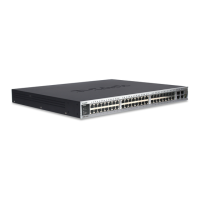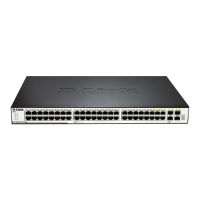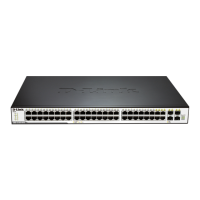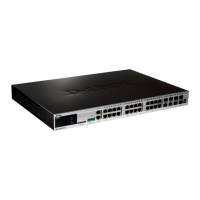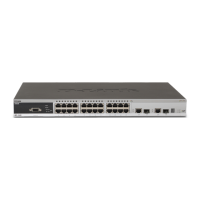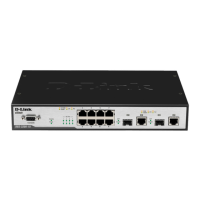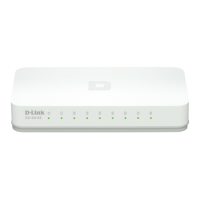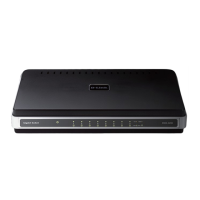Chapter 28 OSPF Routing Protocol Configuration DGS-3610 Series Configuration Guide
DGS-3610(config-router)# neighbor ip-address
[priority number] [poll-interval seconds]
Specify the neighbor and designate its priority
and round robin interval of hello.
In a non-broadcast network, if it cannot ensure that any two routers are in direct connection,
the better solution is to set the network type of the OSPF to the point-to-multipoint
non-broadcast network type.
Whether in a point-to-multipoint broadcast or non-broadcast network, all the neighbors have
the same cost, which is the value set by using the ip ospf cost command. However, the
bandwidths of the neighbors may be actually different, so the costs should be different.
Therefore, you can specify the necessary cost for each neighbor by using the neighbor
command. This only applies to the interfaces of the point-to-multipoint type (broadcast or
non-broadcast).
To configure the point-to-multipoint type for the interfaces in a non-broadcast network,
execute the following commands in the interface configuration mode:
DGS-3610(config-if)# ip ospf network
point-to-multipoint non-broadcast
Specify the network type of the interface to be
the point-to-multipoint non-broadcast type
DGS-3610(config-if)# exit
Exit to the global configuration mode
DGS-3610(config)# router ospf 1
Enter the routing process configuration mode
DGS-3610(config-router)# neighbor ip-address
[cost number]
Specify the neighbor and specify the cost to the
neighbor
Pay attention to step 4. If you have not specified the cost for the neighbors, the costs
referenced by the ip ospf cost command in the interface configuration mode will be used.
28.2.3.4 Configuring Broadcast Network Type
It is necessary for the OSPF broadcast network to select the designated routers (DR) and
backup designated router (BDR). And the designated routers will notify the link status of this
network to the outer networks. All of the routers keep the neighbor relationship. However, all
of routers only keep the adjacent relationship with the designated routers and backup
designated routers. That is to say, each router only switches the link status data packet with
the designated routers and backup designated routers, and the designated routers notify all
routers, so that each router can keep the consistent link status database.
You can control the election result of the routers by setting the OSPF priority parameter.
However, the parameter does not take effect immediately and affect the current designated
router. It takes effect only in the new round of election. The unique condition to carry out new
selection of the designated routers is that the OSPF neighbor doesn‘t receive the Hello
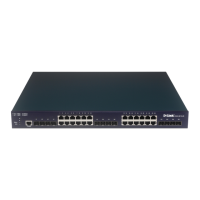
